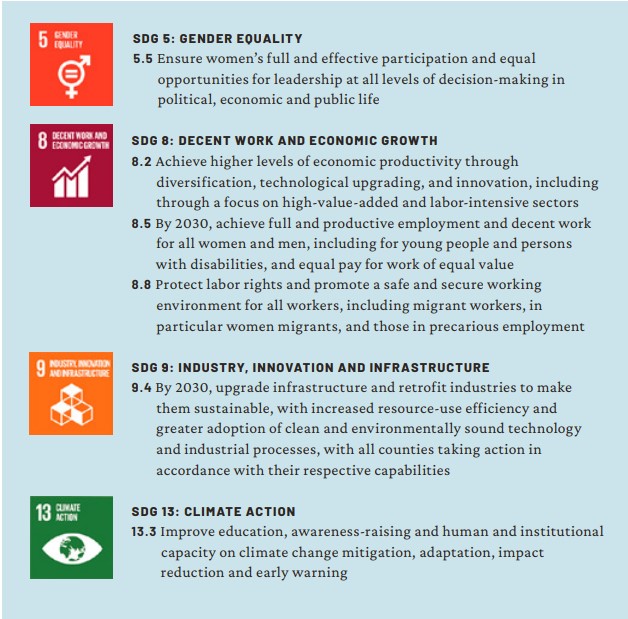OUR APPROACH

This decade is critical for tackling the global issues that threaten the standards of living and the health of the planet for future generations. But it is not only the environment where action needs to be taken; there are social issues that are challenging the standards of living of societies around the world.
Sustainability is a fundamental, unifying concept for Kongsberg Automotive. It is the common thread that connects diverse objectives, stakeholders, and issues. Our Corporate Responsibility program is designed to support our strategic aims, taking into account the issues that are important to our many stakeholders. Our approach to Corporate Responsibility for long-term, sustainable success by having a positive impact on society and the environment.
The SDGs are a UN framework that identifies the key areas where action should be taken to build a more sustainable world.
KONGSBERG AUTOMOTIVE RECOGNIZES THAT COMPANIES HAVE AN INFLUENCE OVER ALL SDGS, BUT THE FOLLOWING FOUR SDGS ARE THOSE THAT ARE MOST RELEVANT TO THE COMPANY’S ACTIVITIES:
KA’S ACTIVITIES HAVE A SIGNIFICANT IMPACT ON:
PEOPLE
We work to create safe workplaces where the diversity of our global workforce is valued. We also support our local communities around the world.
PLANET
We aim to minimize the environmental impacts of our operations and products.
Continuously improving our environmental performance is essential to meeting
our business objectives and customer requirements.
PRODUCTS AND SUPPLY CHAIN
We aim to design greener and safer products, and work with our supply chains to help them be more sustainable and responsible.
MATERIALITY MATRIX
In 2023 KA used for the first time a double materiality analysis to identify the most important sustainability topics. Thereby, it was analyzed which topics have the greatest impact on the environment, people and the economy (Inside-Out perspective, "impact materiality") and which have the greatest impact on the company's business performance (Outside-In perspective, "financial materiality"). The methodology for identifying these material topics is based on legal requirements and recognized standards such as the European Sustainability Reporting Standards (ESRS) and the Global Reporting Initiative (GRI). This ensures that the process has been carried out correctly and complies with current requirements. These analyses have been carried out based on quantitative and qualitative information. The results of the analysis provide the basis for the further development of the sustainability strategy and KA’s sustainability reporting focus.
KA’s double materiality analysis was conducted between September 2023, and December 2023. During this period, we followed 3 different steps:
- The general selection of relevant sustainability topics for further analysis
- The prioritization of the selected by reflecting the 2 perspectives mentioned above
- The final analysis - ending with a matrix of material topics
For step 2 several workshops and interviews with KA employees from different departments and functions have been conducted. The discussion focused on the impact, risk and opportunity perspective in relation to the selected sustainability topics. In addition, external reviews, industry consultations and assessments have been done which reflect the different stakeholder perspectives. Based on these internal and external analysis, we have been able to create a final ranking of the different sustainability topics and positioned them in a matrix – as it is condensed and visualized in the graphic below. The whole approach and the outcome has been reviewed and approved by KA’s management.

We identified 11 topics as material for KA. This means that KA has either a high impact on those topics or that those topics represent a high risk or opportunity for us. In many cases, both aspects are also fulfilled. These material topics represent a balanced mix of environmental, social and governance topics.
The results of this double materiality analysis will help KA to focus its sustainability reporting on the material topics, especially regarding the requirements of the European Sustainability Reporting Standards (ESRS). The whole process provided KA in addition helpful guidance for the further development of our sustainability strategy.
Find more information on KA's double materiality approach here.